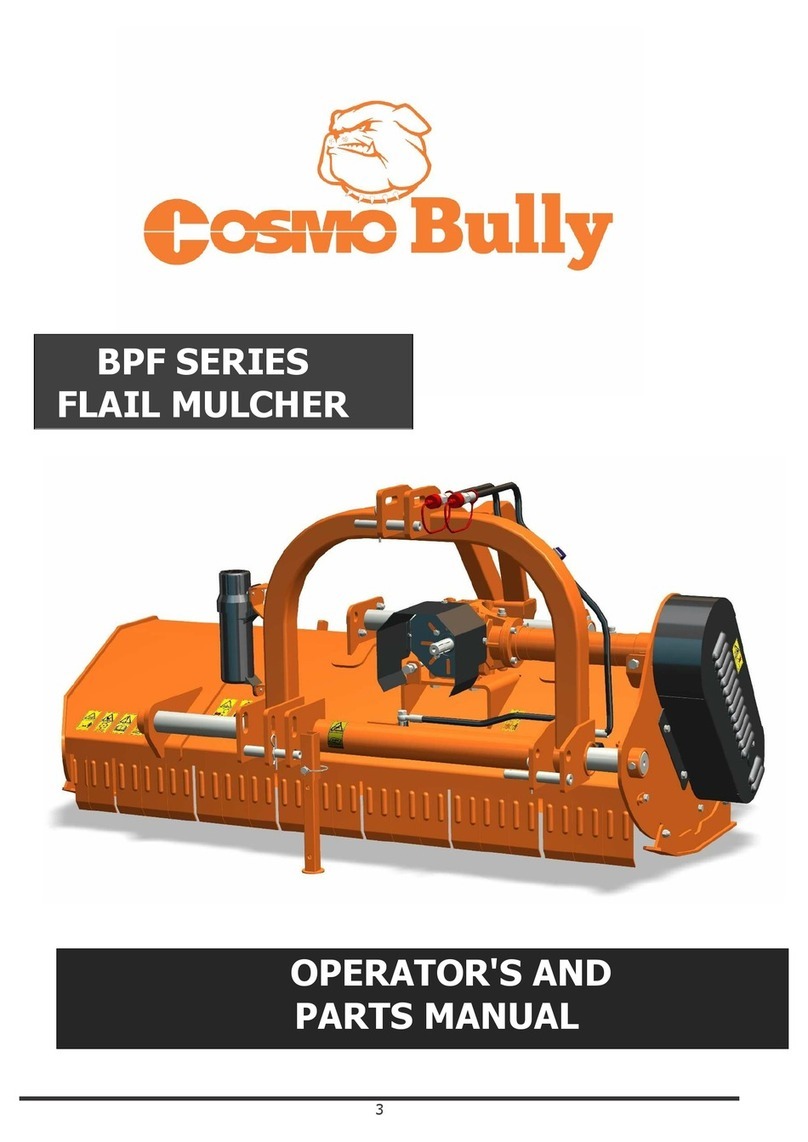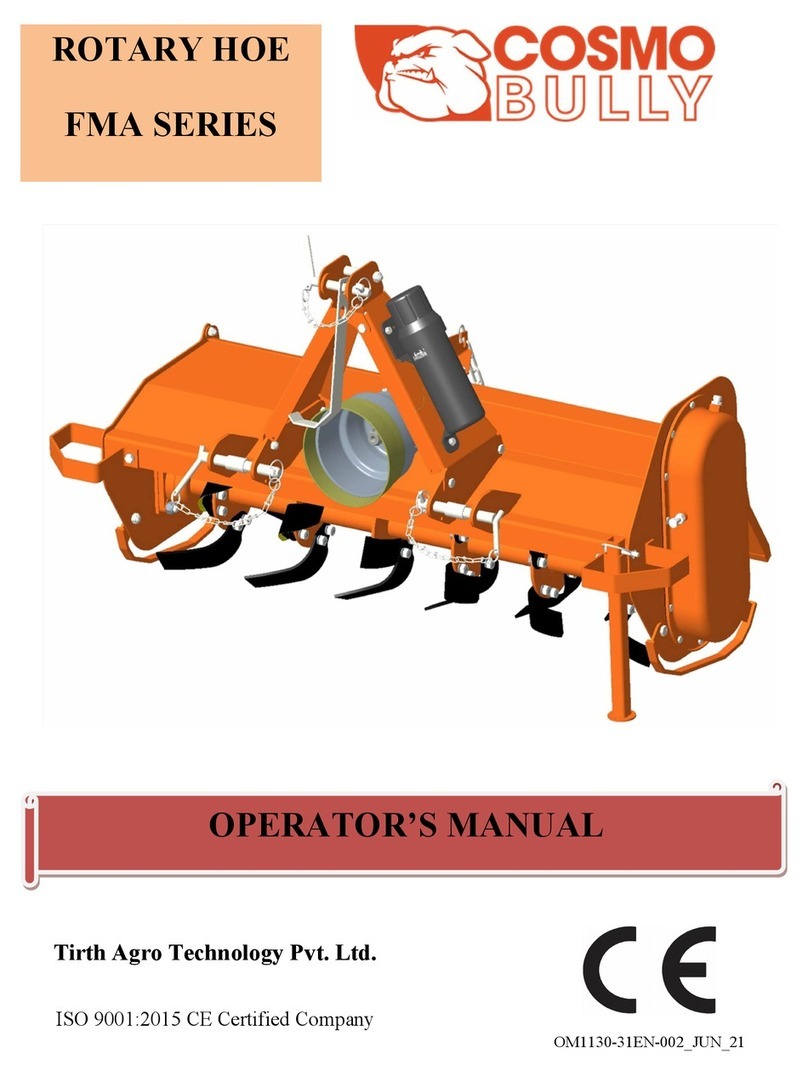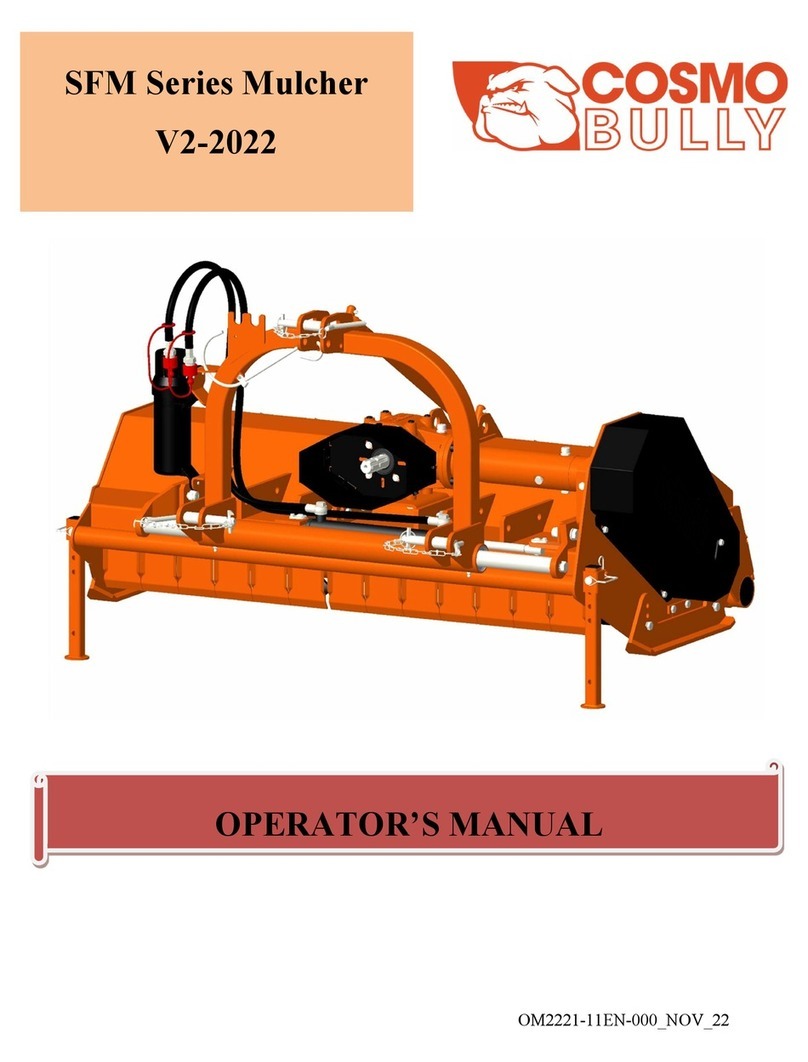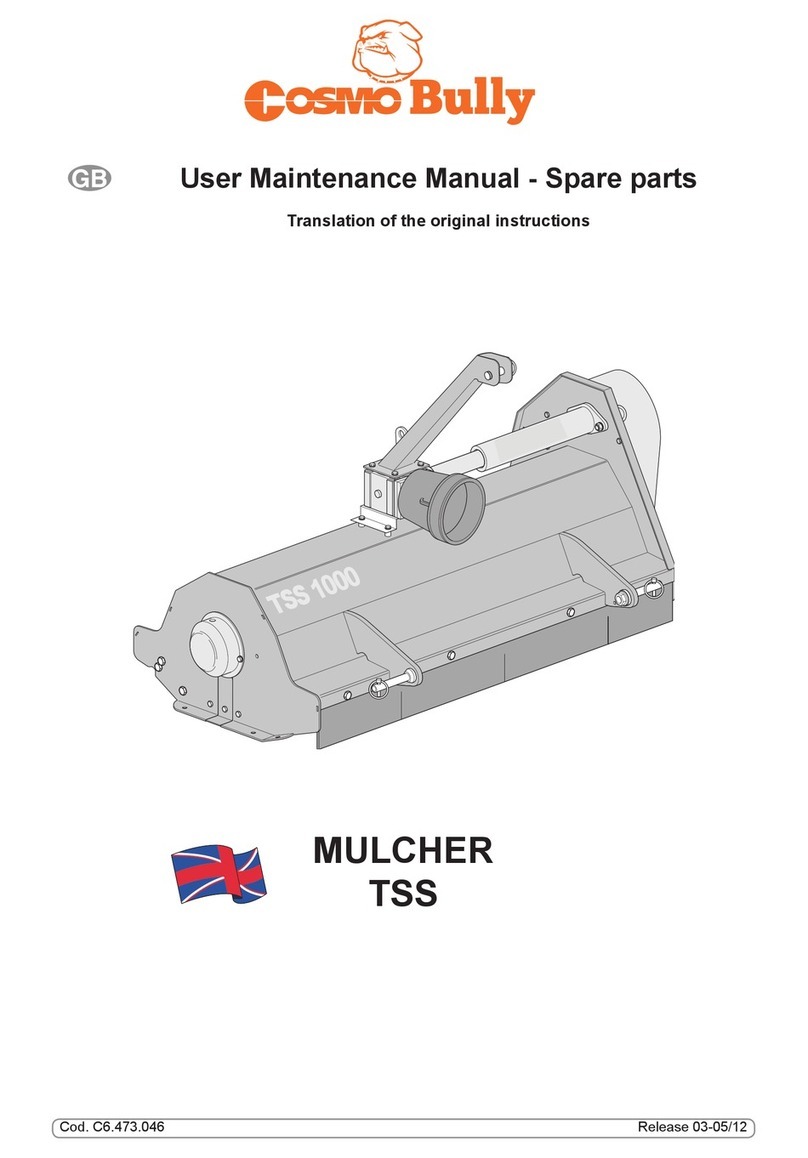
7
CAUTION
Indicates a potentially hazardous situation which, if not avoided, may result in minor or
moderate injury. It may also be used to alert against unsafe practices.
For your protection
Thoroughly read and understand the “safety label” section, read all instructions noted on
them.
Shutdown and storage
Lower machine to ground, put tractor in park, turn off engine, and remove the key.
Detach and store implements in a area where children normally do not play. Secure
implement by using blocks and supports.
Use safety lights and devices
Slow moving tractors, self-propelled equipment, and towed implements can create a
hazard when driven on public roads. They are difficult to see, especially at night.
Flashing warning lights and turn signals are recommended whenever driving on public
roads. Use lights and devices provided with implement.
Transport machinery safely
Comply with state and local laws.
Maximum transport speed for implement is 20 kph. Do not exceed. Never travel at a
speed which does not allow adequate control of steering and stopping. Some rough terrain
requires a slower speed.
Sudden braking can cause a towed load to swerve and upset. Reduce speed if towed load
is not equipped with brakes.
IMPORTANT: Do not tow a load that is more than double the weight of tractor.
Keep riders off machinery
Riders obstruct of operator’s view, they could be struck by foreign objects or thrown from
the machine.
Never allow children to operate equipment.
Practice safe maintenance
Understand procedure before doing work. Use proper tools and equipment. refer to
Operator’s Manual for additional information.
Work in a clean dry area.
Lower the implement to the ground, put tractor in park, turn off engine, and remove key
before performing maintenance.
Allow implement to cool completely.
Do not grease or oil implement while it is operation.
Inspect all parts. Make sure parts are in good condition and installed properly.
Remove buildup of grease, oil or debris.
Remove all tools and unused parts from implement before operation.
Prepare for emergencies
Be prepared if a fire starts.
Keep a fist aid kit and fire extinguisher handy.
Keep emergency numbers for doctor, ambulance, hospital and fire department near
phone.































